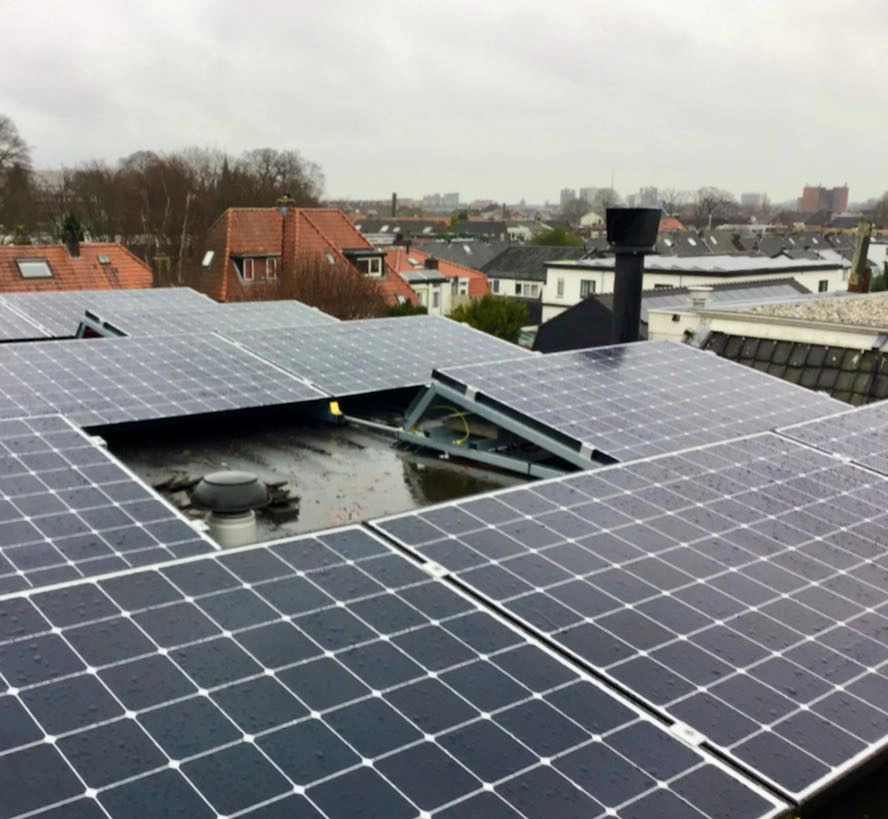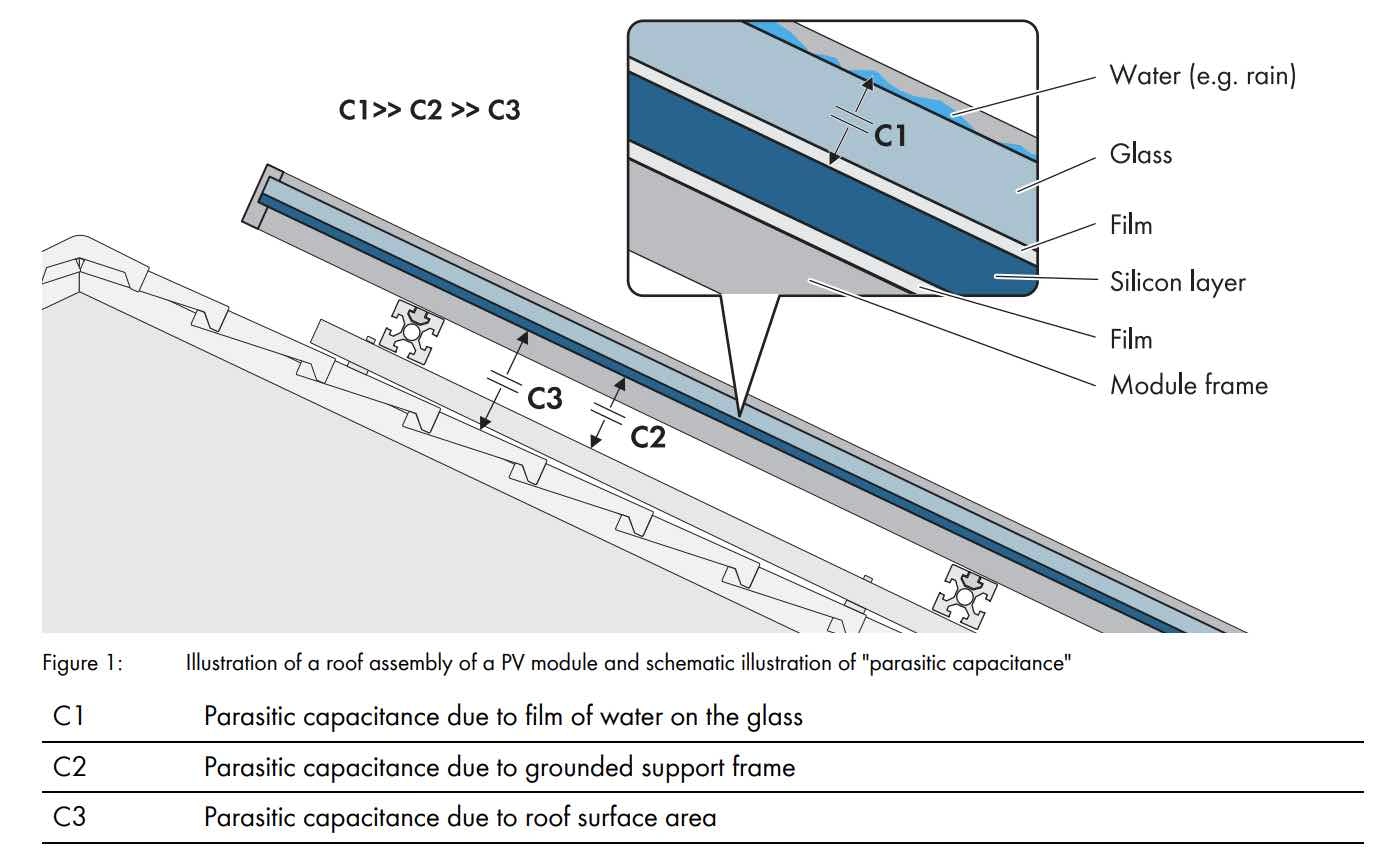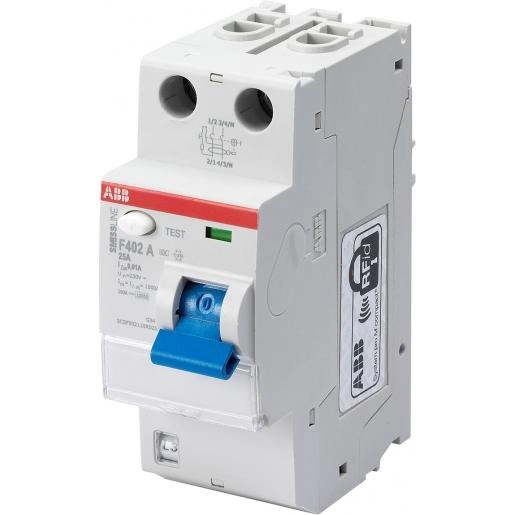Solar panel systems have a peculiar property: they can cause a form of leakage current despite the fact that they are completely insulated from the earth. Normally, leakage currents only occur when a live wire is not properly insulated: part of the current that should remain within the cables and electrical appliances then leaks away. A residual current device (RCD) in the distribution board detects that the current returning via the neutral conductor is smaller than the current going in via the phase wire, and automatically breaks the connection: in this way the leak is stopped and there is no longer any danger to humans and animals.

Moisture on panels increases the chance of leakage currents that can cause an RCD to trip if it is too small
Earth leakage protection using RCDs is a fantastic invention that has prevented a lot of human suffering. That is why all light points and wall sockets (power outlets) in Dutch homes are equipped with RCDs as standard, which are activated when as little as 30 mA (milli-Ampere, 1 mA = 0.001 Ampere) of leakage current is measured. This ensures that the power is immediately cut off as soon as someone sticks their finger in the socket, before that person has had to deal with a potentially lethal amount of current.
However, the leakage current that comes from a solar panel system can incorrectly trip a 30 mA RCD. This leakage current, which is called ‘capacitive’, is caused by the fact that solar panels on the roof have the same property as a capacitor. The level of the ‘capacitance’ of these capacitor plates (expressed in ‘microFarad’, or µF) determines how large this leakage current can be.

This picture shows how the 'capacitance' of a solar panel (in µF) is made up of different elements (source: SMA)
It all comes down to a lot of physics, that much is clear. What is important to know is that the capacitance of solar panels depends on the type of solar panel and the number of panels, but also on whether there is water on the panels: a film of water on solar panels increases their capacitance. Solar panels that have been on a roof for a long time inevitably get small scratches in the glass plate over time. This makes it easier for drops of water to stay on them instead of flowing off. The water doesn't affect the yield, but it does affect the capacitance and therefore also the leakage current.
As a consequence: especially in rainy weather, solar panels can cause an RCD to trip. That is why it is important not to place the solar panels, especially the larger systems, behind a 30 mA RCD. When Zonnefabriek installs solar panels, we therefore usually opt for a larger 300 mA RCD. We explain this in detail in this article on our FAQ page.

You can easily recognize an RCD by the test button (in this example the white button, top left)
Many electricians are not aware of this property of solar panels. They are used to placing all circuits in a home behind a 30 mA RCD, because they have learned that this is the safe way to do it. That's why it sometimes happens that when an electrician replaces a distribution board after Zonnefabriek has placed the solar panel installation, they remove our 300 mA RCD and replace it by a 30 mA RCD. That usually works well for a while, until it starts raining: then suddenly it looks as if the solar panels are causing problems.
That's why it's important to pay attention when you ask your electrician to modernize your electrical cabinet: always ask that the solar panels are connected to their own, separate RCD, and make sure that it's a 300 mA RCD. That way you can avoid unpleasant surprises in the future!